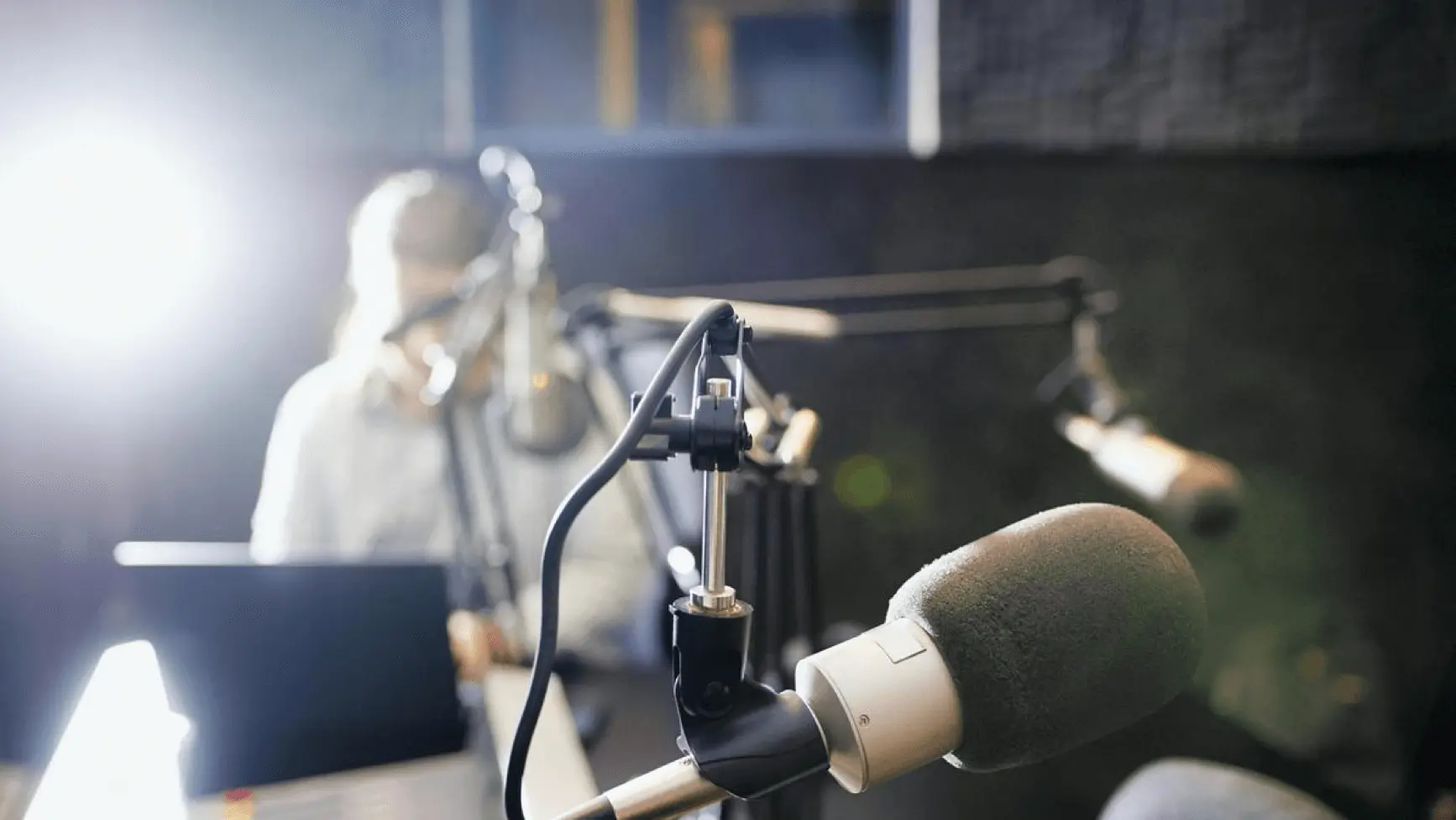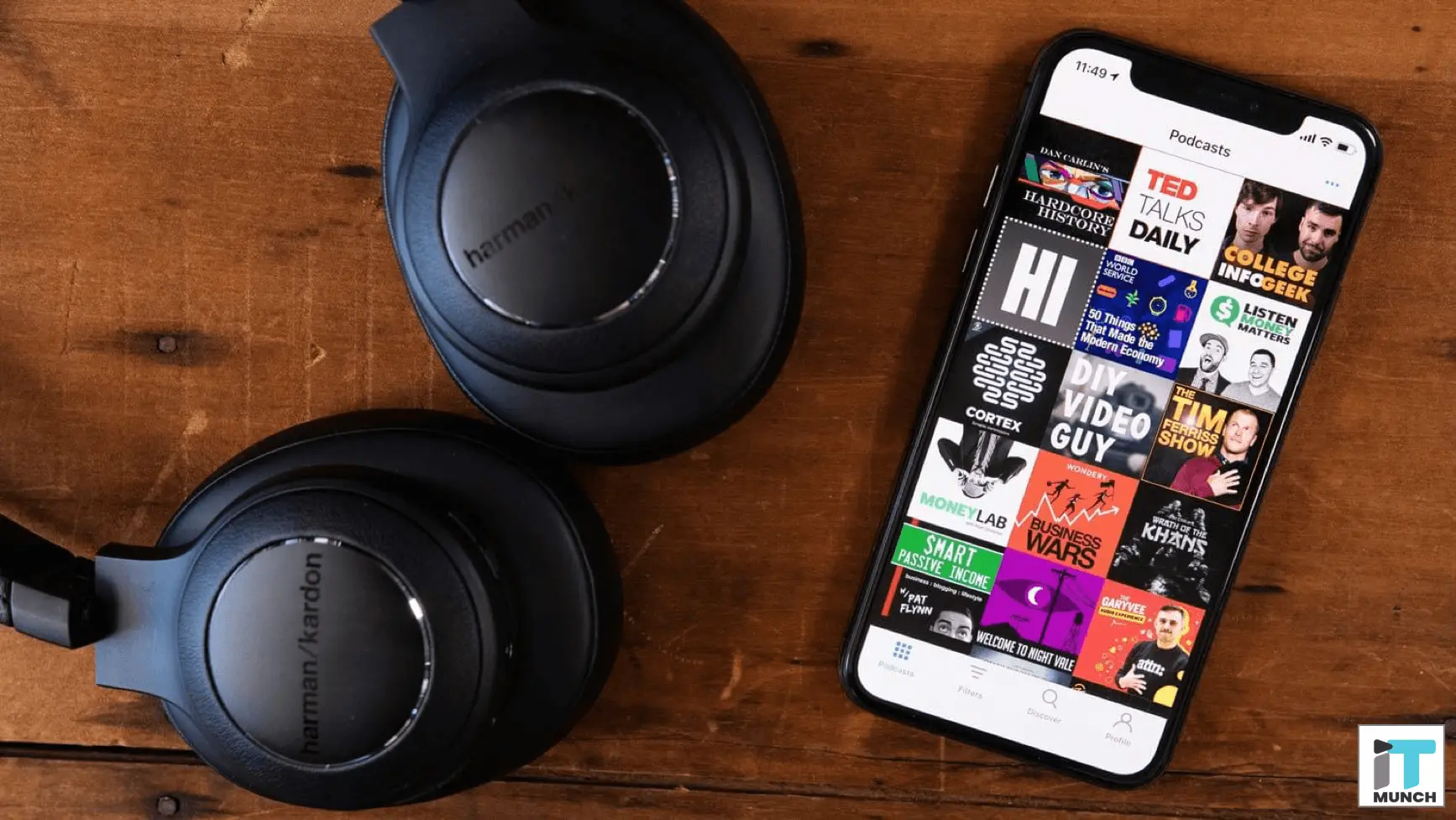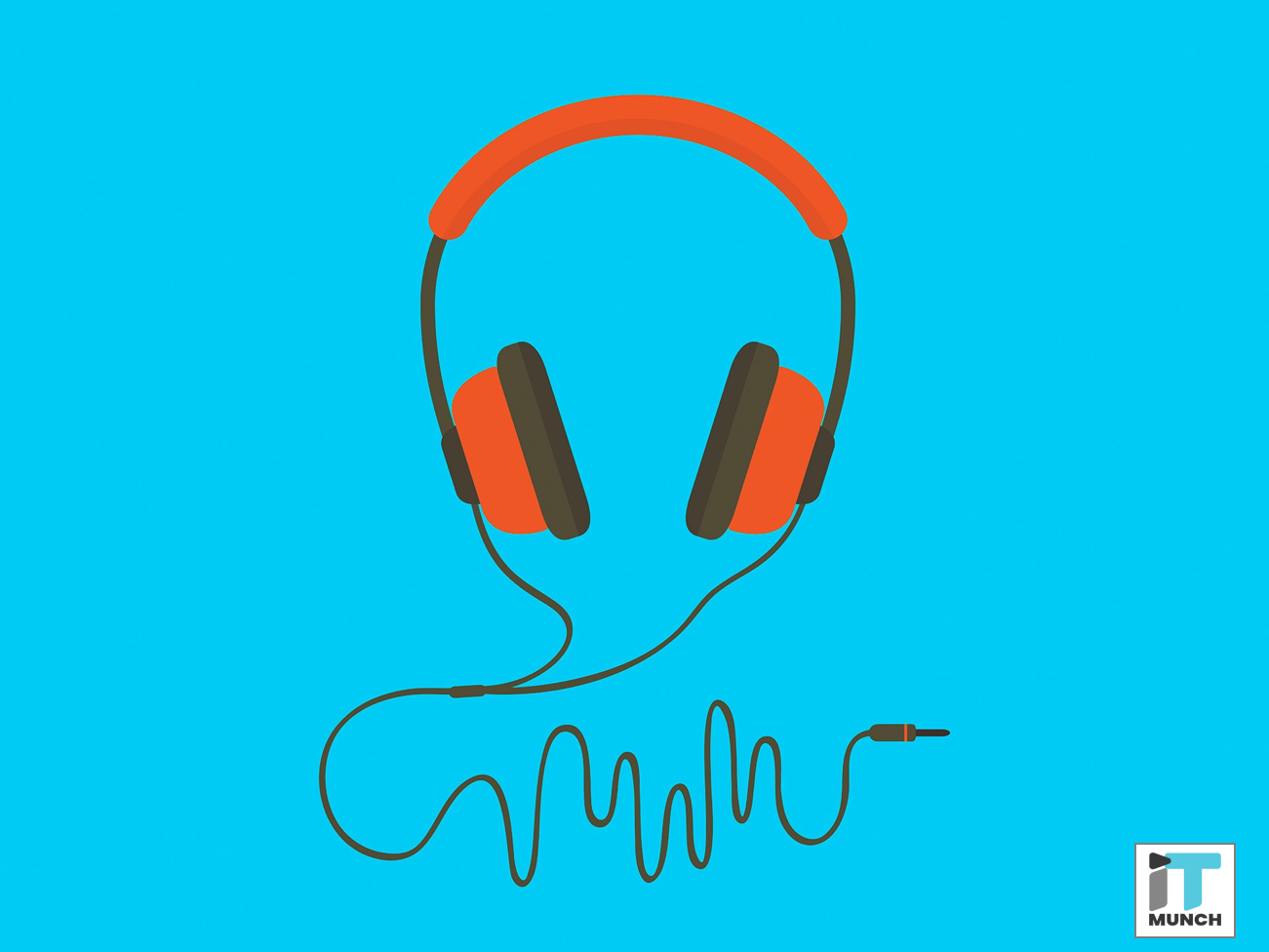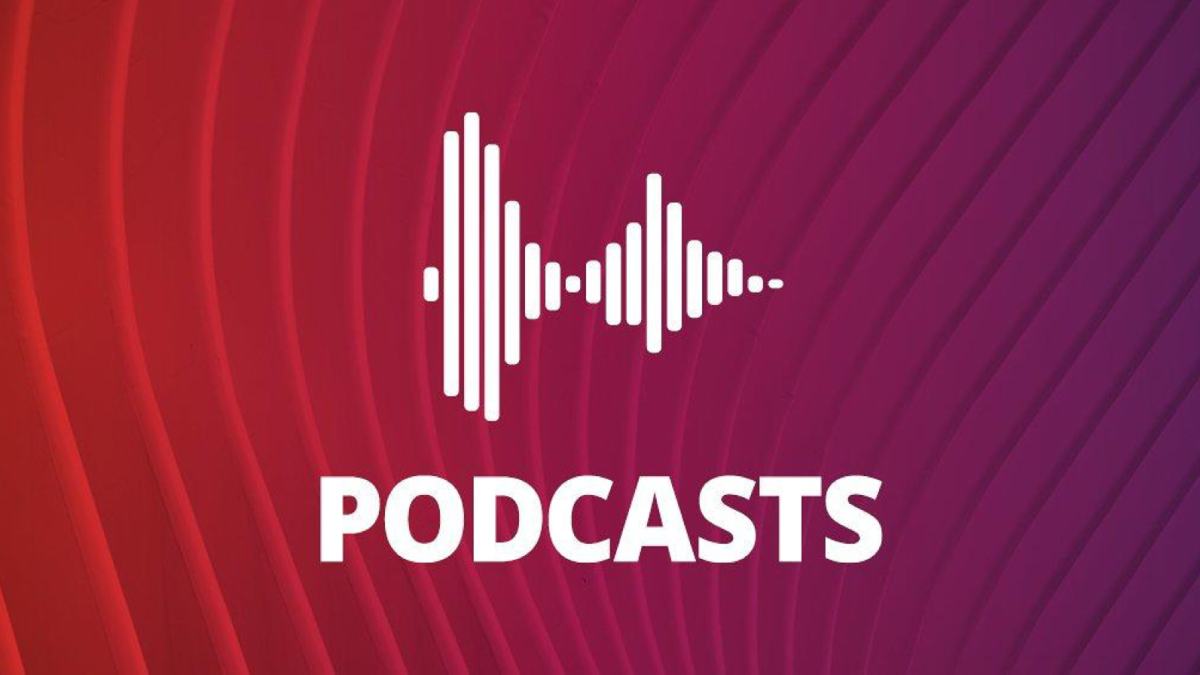Before we dive into a lengthy explanation of podcasts and their future, let’s take a look at the word “podcast’ itself. It was first mentioned in a 2004 Guardian newspaper article by Ben Hammersley. The “pod” of the podcast is borrowed from Apple’s iPod; the “cast” is taken from the term Radio broadcast. To clarify, however, you can listen to a podcast in any digital media player.
In its most simple form, a podcast is the internet’s version of a talk radio show. The added perk is that you can listen to a podcast in your own time rather than having to tune in at a particular time.
It is a series of ‘episodes’ that are stored in the form of an audio file on your laptop or smartphone. Like every TV or Radio show, podcasts generally centre around a particular theme such as politics, sports, entertainment, technology, horror, gaming, etc. Each episode within a podcast usually revolves around a subject within a topic.
For example, Exponential View is one of the best tech podcasts that focused on sharing insights about the future of technology and the tech industry — hosted by Azeem Azhar’s who is a former tech entrepreneur and journalist. The show usually talks about exponential technologies like AI, political economy, and society.
SEE ALSO: Google Hire to Shut Down in 2020
On the other side of the spectrum, there is How Did This Get Made? That pokes fun at hilariously bad movies. Each episode focuses on one movie where hosts Paul Scheer, June Diane Raphael and Jason Mantzoukas and their friends watch and comment on awful films.
Read more about how podcasts can be used for monetization and the role of podcats in advertising!
How Are Podcasts Different Than Talk Radio?

As mentioned earlier, the apparent difference between a podcast and a talk radio show is the availability of the podcasts. However, these days, various popular radio talk shows also release their podcast versions for listeners who miss the regular show.
In a lot of ways, podcasts are the long-tail version of radio. In other words, there is only show much bandwidth available for radio shows, so they need to appeal to a broader audience. However, with podcasts being distributed over the internet, you will have access to podcasts that cover a wide variety of topics. If you are interested in very niche topics, you will find a podcast that covers the topic.
The final difference between podcasts and radio shows are that podcasts can travel with you no matter where you go. You can listen to your favourite show at home, in the car or on your mobile.
These benefits can be seen in the numbers since more than 67 million people listen to podcasts every month. Thanks to the rising number of people listening, podcasts are quickly turning into an excellent medium for advertisers. So how are podcasts being used for monetization?
How Podcasts Are Being Used For Monetization
Make Money Through Sponsorships
Sponsorships are when companies willingly pay influencers to get their brands in front of their audience. Sponsorships are one of the most popular methods by which podcasters make money. However, getting sponsorships can take time. Moreover, you must also keep in mind that the come of the money you make from sponsors or others is often used to create the podcast. For instance, if you earn INR 10,000 from a sponsor, you may need to invest INR 5000 into creating another episode for your podcast. Essentially, you will only be keeping the remaining INR 5000 with you as your income. Various podcast advertising networks can help garner new sponsors.
Make Money Through Donations and Crowdfunding
A lot of podcasters fund their shows out of their own pockets, and some of them turn to their listeners for help. It’s not uncommon for podcasters to set up GoFundMe, Patreon, or Kickstarter accounts to collect donations for their podcasts. Podcasters lead their listeners to crowdfunding websites or ask them to donate directly via other means. For instance, Elecia White and Christopher White turned to Patreon for raising funds to provide their guests with microphones for their podcast Embedded.
Make Money Through Affiliate Links
While some podcasters choose to fund themselves via sponsors, others prefer the affiliate route. With affiliate links, a podcaster earns a cut of the money that their listeners pay for a brand or service via the podcast, usually by clicking a link. For example, a podcaster could offer listeners with 10% off discount code when using SkillShare. The podcaster will then earn a share of the money that those who used the specific code pay SkillShare.com. Podcasters usually create show notes for their listeners who may include links to the products or services mentioned in the episode.
Make Money Through Paid Content
Many podcasters avoid making money via ads and instead turn towards paid content and subscriptions to earn their revenue. While a lot of podcasts are available to listeners for free, many choose to charge a certain fee before allowing their customers to access their episodes. Alternatively, a subscription may also provide consumers with bonus content or an ad-free experience. For instance, Mel Robbins’s podcast, Take Control Of Your Life, is available only to Audible customers.
Make Money Through Selling Merchandise
A lot of podcasters have discovered that fans are willing to invest in merchandise to support and promote their favourite podcast. Therefore, a lot of podcasters offer branded merchandise on their website. These can be anything from t-shirts to gift certificates. There are various websites that can be used to distribute these products. Alternatively, podcasters can also buy a product-specific domain name and design a website and a web store from scratch.

Out of the five mentioned methods to earn money, the fastest to through advertisements. However, it’s essential to look into the industry-standard before looking for a sponsor.
The Role Of Advertising In Podcasts
Podcast advertising is similar to any other form of advertising online. A business will create an ad which the podcast host will play during the recording. However, it’s vital that podcasters understand the importance of choosing the right adverts. It’s never a good idea to accept every single sponsorship that comes your way. Instead, podcasts should run ads that are related to their content or offers a benefit to their listeners. Therefore, it’s essential to choose the right ad since that power lies solely in the hands of the host.
What’s The Proper Length Of A Podcast Ad?
Podcast ads tend to be relatively short, and the ads are generally played in two separate ad slots.
- Pre-roll – They are a short 15-second ad slot played at the beginning of a podcast.
- Mid-roll – These are longer 60-second ads played in the middle of the podcast.
You can also place an ad at the end of the podcast; however, it’s a rare occurrence. During the outro, the podcaster is usually providing their listeners with a call to action. Placing an ad in the outro is risky since listeners may tune out since the podcast is already over. However, placing an advertisement in the before or in the middle of the episode allows a brand to create an impression because 40% of people listen to the entire podcast.
These ads can either be produced by the business, or the podcaster can choose to read out the content of the ad. This varies from podcast to podcast based on which version best suits the company and the podcast.
How Many Ads Should A Podcast Have?
The industry standard of the number of ads in a podcast is between 2 – 4 ads per episode. Considering the benefits and the short length od podcast ads, this may come as a surprise. However, this minuscule number is due to the nature of podcast advertising.
A podcast ad needs to enhance the episode’s content and be of use to the listeners. Therefore, finding ads that fall into both these categories can be difficult. Moreover, a lot of businesses offer similar products, and it’s highly unlikely that they would want their products placed among three of their competitions.
Additionally, podcasts are designed to be compact and suitable for listening on the way to work or while cleaning the house. Adding frequent 10-second ads will increase the length of the podcast. If hosts start cutting out content to fit these ads, they will quickly lose listeners and eventually advertisers as well.

The Pricing Model For Podcast Ads
Like most digital advertisements, there are majorly three different pricing methods for podcast ads and sponsorships. They are:
- Cost per mille (CPM) – Under this model, the price is defined per thousand listens. For every thousand podcasts listened, the sponsor will pay a determined amount.
- Cost per acquisition (CPA) – This model determines the price as the cost to acquire a unique consumer. Consequently, every time the podcast leads a consumer to the company, the company pays a pre-determined price to the host.
- Freely negotiated price – This model is a contracted price between the podcast host and the business. The model typically sees the podcast host proposing a price, with the sponsor either accepting or rejecting it.
There are several pros and cons to each model mentioned above. However, the CPM model is the industry favourite. However, if a podcast is very niche, and a brand product is perfect for the audience, then CPA is also a great pricing model. The last pricing model works best when it comes to a new and upcoming podcast.
Podcasts online advertisements offer great opportunities for businesses. However, like every other advertisement medium, the quality of the ads play a huge role in its success. In fact, the difference between a good show and a disaster often depends on the quality of the ads themselves. Why? Because listeners make a decision to download and listen to a podcast and bad advertisements can discourage them from tuning in to a show ever again.
There are three-pointers to remember when creating a podcast ad that will be successful:
- A short message: Keep podcast ads between 15 to 60 seconds.
- A creative ad: Modify the ads for each slot.
- Understand the audience: Ensure the ad fits the interest of the audience listening to the podcast.
For example, if your podcast is about photography, running ads about a business that sells cameras is the right choice. Your audience already shares a passion for photography and will probably be interested in purchasing photography equipment.
Now that you understand the technicalities of podcasts and podcast ads let’s take a look at some of the best podcasts you can listen to on Spotify, Apple Podcasts, or another podcast app.
Best Podcasts Currently Available

The Dream
Hosted by Jane Maire, The Dream is a captivating examination of pyramid schemes, the people who run them, and the lives destroyed by them. Jane Marie looks into every aspect of multi-level marketing schemes, those from days past and those that are still abounding on social media giants like Instagram and Facebook. It is an 11 episode series with a run time of around 40 minutes each episode.
Exponent
Hosted by Ben Thompson and James Allworth, Exponent is an analysis of the trends that are shaping the tech industry. The podcast leans towards the business side of technology rather than it’s cultural implications. The hosts draw links between companies and headlines that are driving the tech industry today. Exponent has hour-long episodes that are released every two weeks.
99% Invisible
Hosted by Roman Mars, 99% Invisible talks about the stories behind brilliant design and architecture. This podcast covers everything from why city benches are designed to be uncomfortable, to the flaws that are changing the way homes are designed. 99% Invisible crafts fascinating stories about parts of the world that we don’t pay attention to. New episodes are released every Wednesday and can last from 30 to 50 minutes.
Podcasts are slowly gaining popularity amongst listeners and advertisers alike. It is impacting traditional industries like journalism, entertainment, education and among others because it enables everyone to create and share their ideas and creativity.
This is only the beginning, after all, podcasts are here to stay.
SEE ALSO: The Truth About Your Digital Identity
For more updates on the latest technology news, related to HR, AI, Finance, IT, Startups and Marketing, keep reading iTMunch.
Image Courtesy: iStock – Nicola Katie





